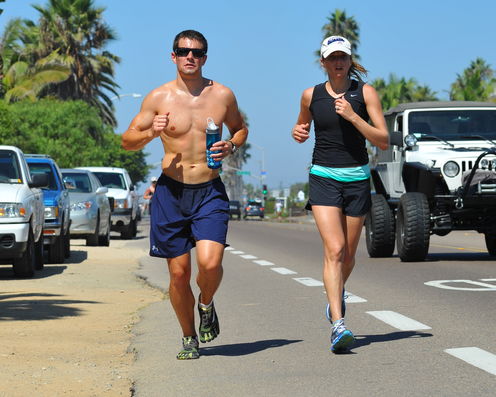
Electrolytes are an important part of normal human function. The failure to maintain a normal balance of electrolytes can lead to dehydration and possibly heart and neurological problems.
When we’re physically active, either as a regular part of the day or when exercising, our bodies produce heat. So we start sweating to prevent overheating. Loss of water in this way can lead to dehydration, but failure to prevent overheating by sweating can result in dizziness, thirst, headaches, nausea, muscle spasms, cramps, fatigue and disorientation.
The human body can produce up to two litres of sweat in an hour, although this amount is highly dependent on environmental conditions as well as exercise intensity and duration. Sweat losses of this magnitude, which can amount to 2% of body weight, can significantly affect how the body functions at rest. And it can result in a significant decrease in performance during exercise.
Enter electrolytes
Sweat is largely made up of water (the watery part of blood known as plasma) as well as important minerals including sodium, potassium, magnesium, chloride, calcium, bicarbonate, phosphate and sulphate. These minerals are collectively known as electrolytes and are essential for the normal function of our cells and organs.
Sodium is the most important electrolyte because it plays a key role in normal muscle and nerve function and preventing cramps, as well as in stimulating thirst, improving fluid absorption in the small intestine and helping fluid retention.
Other electrolytes also play key roles in normal physiological function. Calcium, for instance, helps co-ordinate muscle contraction. Low levels of potassium and magnesium are implicated in muscle cramps. Chloride, bicarbonate, phosphate and sulphate all contribute to maintaining pH balance and regulating fluid in and out of cells.
Traditionally, we just drank water to rehydrate, but research published in the 1990s showed that could be improved on when water had a small amount of glucose and a larger portion of sodium in it. This led to the creation of electrolyte-based rehydration drinks.
Electrolyte drinks
Electrolyte drinks are a simple but effective way of rehydrating. You can buy ready-made drinks as a practical way to replace the lost electrolytes, or you can purchase a tube of effervescent electrolyte tablets or tub of powder and simply mix with plain water. Alternatively, you can add a little bit of salt to your post-exercise meal as an economical alternative.
But the tablet and powder make a nice-tasting, scientifically formulated drink that quickly rehydrates. And it may be a better choice because many ready-made electrolyte drinks contain large amounts of sugar.

Typically known as “sports drinks”, these beverages have a different intention to just rehydrating. They aim to replenish the sugars used during high-intensity exercise. But most people who exercise don’t do so to the degree of intensity that justifies consuming sports drinks.
Electrolyte “only” drinks, that is, the tablets or powder you dissolve in water yourself, are calorie-free. So they’re a better option for people who are exercising to lose weight and are looking to rehydrate, or even people who don’t want to consume the added sugar. Sports drinks have been linked to serious dental erosion.
Who benefits?
Everyone sweats during exercise – both incidental and planned – so electrolytes are good for anyone who wants to recover the water and electrolytes lost through sweat. That means anyone from recreational exercisers to elite athletes can consume electrolytes. The main thing to be mindful of is the sugar content of sports drinks.
When we exercise, our fluid and electrolyte requirements increase. So consuming at least half a litre of an electrolyte drink three to four hours before exercise, a quarter of a litre two hours prior to exercise and approximately the same every 20 to 30 minutes during exercise will ensure you stay hydrated.
The most important thing to note is that everyone sweats at a different rate. A practical way to work out how much fluid you lose during exercise is simply to weigh yourself immediately before and after exercise. The difference will indicate how much you need to replace: for every one kilogram of body weight lost during exercise, you should consume a litre and half of an electrolyte drink.
If you’re particularly curious, you can compare your urine colour against a chart or have it assessed in terms of darkness. Darker yellow or brown urine indicates greater levels of dehydration.
Or you can simply drink to thirst – a strategy that’s just as effective as having a personalised hydration protocol!
Remember that the warmer it is, the more you will sweat, so you’ll need to drink more during the warmer months. Improving your daily hydration levels will support your exercise requirements and help you get and keep fit.
Jon Bartlett does not work for, consult to, own shares in or receive funding from any company or organisation that would benefit from this article, and has no relevant affiliations.
